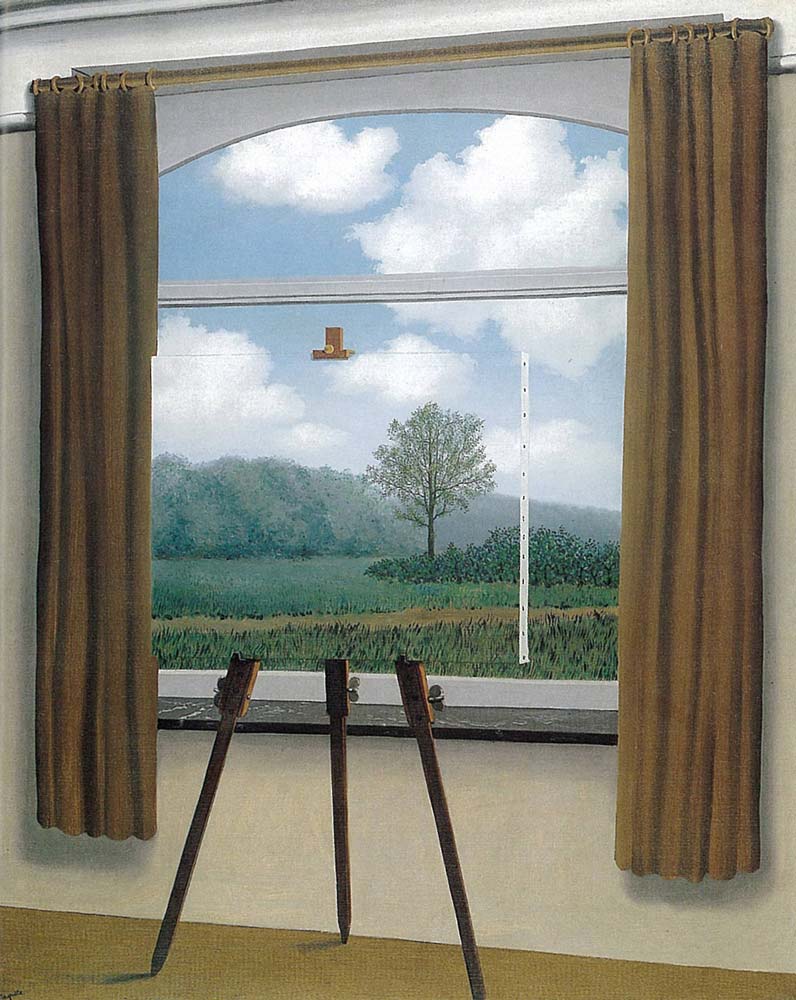This is my fourth entry on mental imagery: this time on the consequences of all this for epistemology.
Mental imagery: Perceptual processing that is not triggered by corresponding sensory stimulation in the relevant sense modality.
How is it triggered then?
- Bottom-up? Sometimes (e,g., blind spot, amodal completion by simple Gestalt rules

- Top-down? Sometimes (e.g., watching someone familiar on TV with the sound muted)

So yet another distinction between different kinds of mental imagery
If mental imagery can be subject to top-down influences and (almost all) perception depends constitutively on mental imagery, then (almost all) perception can be subject to top-down influences.
Perceptual justification
Knowledge is a good thing because it tracks truth
Perception can help knowledge because it also tracks truth
Worries from impure perception: circularity
Wishful seeing (Pylyshyn)
Knowledge is based on perception, but perception is influenced by knowledge…
I’m not sure this is a problem:
Two debates about top-down influences on perception:
- About perceptual experiences (this is what is taken to have epistemic consequences)
- About perceptual processing (this is where we have an unproblematic case for top-down influences)
But a different (even more serious) problem about perceptual justification:
If it is true that (almost all) perceptual states are mixed perception/imagery states, perceptual justification is problematic for even stronger reasons:
Mental imagery does not track the truth. Neither top-down, nor bottom-up mental imagery.
Case by case analysis of how reliable mental imagery is à naturalized epistemology


Hi, thanks for an interesting series. At this point I have a series of clarification questions.
1. Your description of top-down mental imagery is congruent with the standard account of consciously experienced mental imagery. In contrast, your description of bottom up mental-imagery extends the concept to include perceptual processing that is not consciously experienced as mental imagery or illusion (e.g. the blind spot). Have I understood the distraction correctly?
2. If so, when you say that everyday perception is constitutively dependent on mental imagery do mean both bottom up and top down imagery (as you define them) or just unconscious mental imagery (in the broader concept that you are using)?
3. If you are suggesting that perception is dependent on the conscious experience of mental imagery, then I am curious how you account for those who have never experienced conscious waking mental imagery* In such cases, people can use alternative strategies to complete tasks often assumed to require imagery (now, you may argue that these alternative strategies rely on unconscious meantal imagery as you have defined it. While I am yet to be convinced of that, I don’t think that is important at this point as my question relates to conscious imagery )
*Here I am talking about non-imagers (people who have never experienced waking sense-imagery in any modalities), as well as people who expereince some modalities of imagery but not others (e.g., those recently described as having aphantasia due to having lost or never had visual imagery – which you mention in an earlier video). In both cases, there is no conscious experience of an experience that does not correspond to relevant perceptual stimuli (either in the same or different modalities). For example, in this video you explain top-down imagery processes by suggesting that when the mute button is pressed your audience will ‘hear in their inner ear’ the accent/pitch etc of your voice. Now, to speak for myself, if I mute the screen (or if I look at the Obama gif) I don’t have any sensory-like experience of the absent voice. Even when I know what is being said, I just know that the content – I don’t have any experience of the pitch/tone/accent etc that people who do experience auditory-verbal imagery tell me they do. If anything, a experience it as if I were to silently speak the words myself.
Hi Eden, thanks for this. The distinction between top-down and bottom-up is supposed to be orthogonal to the distinction between conscious and unconscious. The amodal completion example above (with the very simple Gestalt rule) would be conscious but bottom-up, for example.
So the idea is that perception depends constitutively on mental imagery and this mental imagery may be top-down or bottom-up and it may also be conscious or unconscious. For those who do not have conscious experiences of what they imagine, it will depend on unconscious mental imagery. Even if you don’t experience anything auditory when you look at the Obama gif, your early auditory cortex is firing up. Does this help?
Thank you, the reminder that they are orthogonal distinctions does help. Bottom-up examples (both conscious and unconscious) make sense. However, I am still not clear on the idea of top-down unconscious imagery. Would you be able to give me another example of an unconscious top-down experience (and why it would be useful)? I ask because – in the Obama Gif example – the ‘sound’ of his voice seems like superfluous information and, as such, I don’t understand what use unconscious auditory imagery would be in that situation. Indeed, while a relative increase in activity in auditory-association areas involved in language-processing make some sense, what would be the point of the PAC ‘firing up’ if no experience of auditory-sensation is needed for understanding the meaning of what is being said?
Thanks.
Hi Eden, top-down unconscious mental imagery is, I believe, super-important: if you see the lion’s tail sticking out of a bush, amodally (and unconsciously) completing the rest of the lion would be a pretty good idea. And this is top-down mental imagery, which can be (and which normally is) unconscious. The same goes for multimodal completion.
In fact (this is something I didn’t talk about, but I probably should have), a pretty good bet for an evolutionary explanation of why we have such useless and energy-consuming facility as mental imagery is exactly this: it helped us to avoid occluded predators and to catch occluded prey.
Hi Bence, thank you for your response. To clarify, I was not intending to dispute the importance of being able to respond to partially obscured objects as whole objects. However, your use of amodal completion as an example for both top-down unconscious and bottom-up conscious ‘mental imagery’ still does not make the details of your argument clear for me. For example, I am not sure if your conscious/unconscious distinction is intended to serve to distinguish between sensory-experiences/sensationless-experiences, or if this latter dimension is an additional orthogonal distinction.
Reviewing your argument, the latter makes more sense as it doesn’t seem to matter to you whether or not perceptual processing generates any actual sensory experience (e.g. knowing someone is bald doesn’t seem to require a sensory-experience). So as I understand it, you are adopting the concept of mental imagery and extending it to include any situation where the relevant sensory modality is absent and yet primary perceptual processing can be indirectly measured (say, by fMRI) – regardless of whether there is any sensory-like experience. If this is the case, then I think I have been side-tracked due the number of your example that involved descriptions of, or implications that, a sensory-experience occurred in the absence of relevant perceptual stimuli. This was most evident in cases such as the Obama gif. However, as amodal completion is sometimes described as involving the ‘intense sensory experience of completeness and unity behind the occluded object’ (e.g., Pinna 2012) then it is unclear whether or not a sensory-experience – rather than just perceptual processing – is assumed here also.
If amodal completion does not ever necessarily involve sensory-experiences – and I don’t think it need to – then your argument makes more sense to me. In addition, I would be interested to know if the studies you mention on amodal completion included people who don’t rely on an ‘intense sensory experience of completeness’ to experience an occluded object – perhaps instead operating under assumptions based on the available perceptual information and various non-sensory knowledge from, say, a sense of object permanence or prior experience of presumed similar objects. I would not be at all surprised if they did. Indeed, I expect that at the very least processes associated with recognition of the presumed object in question would be involved in a response to a partially obscured object as a whole objects. Positioned in this way, I can see how amodal completion could be positioned as a case of perceptual processing that occurs in the absence of corresponding sensory stimulation in the relevant sense modality (and yet may or may not be experienced as sensory-like).
Thanks, Eden, that’s exactly how I think about these things – your clarifications seem to be much more spot on than mine… So the ‘intense sensory experience of completeness and unity behind the occluded object’ is a completely optional feature of amodal completion.
I should also add that besides fMRI evidence, there is also evidence about how saccades and microsaccades (that are obviously not consciously directed) latch onto the occluded shape (see, e.g., de Grave et al. 2008).
Hi Bence,
Great, thanks – glad to be on the same page. Best of luck with your theorising.
Cheers, Eden